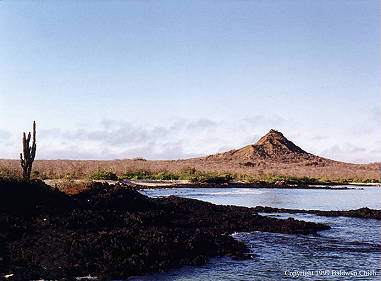

Around 3am, I'm shaken out of sleep by the feeling of the boat bucking violently, and the sound of water splashing against the portholes. I'm convinced that we're in the middle of a raging storm, as my stomach tries desperately to adjust. As I learn later, this is just life at sea, and because of a change in the direction of currents at the equator, you can almost always expect a "bump" crossing it. Trisha sleeps peacefully right through, and only wakes briefly by me poking around the cabin looking for Dramamine.
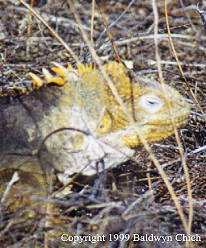
|
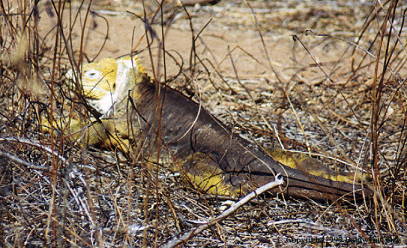
|
Cerro Dragon is home to a brackish lagoon, where the ocean water seeps through the sand, and some is evaporated resulting in hypersalinic water. We hope to see one of the denizens, the greater flamingo, but it eludes us, at least this morning. The graceful common stilt is seen feeding in the waters, nimbly tiptoe-ing through the water with it's long legs.
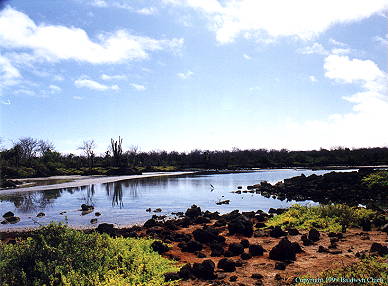
|
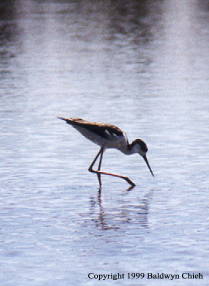
|
 Darwin Finch (Cactus Finch) | It becomes apparent on our visit that the islands have their own individual characteristics. On the horizon, we can see neighbouring islands like Santiago, Sombrero Chino, Daphne Mayor and Minor, quite different from the view of unbroken ocean on Genovesa. Genovesa's isolation gives it a cooler climate, resulting in different vegetation, while also providing a sanctuary for sea birds. Here, there is a lushness, even during the dry season when the palo santo trees are brown and leafless, unlike the barren patches of frozen lava seen on Genovesa. |

|
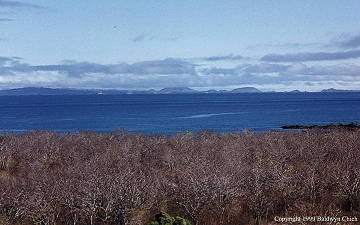
|
After our hike around Cerro Dragon, we hop back onto the panga for a ride around the mangrove habitat. Small rocky islets are home to pelicans and blue-footed boobies that cover the black lava in white guano. Candelabra cacti adorn these pockets of land. We see the blue-foots in brilliant action here as they dive for fish in the water. The boobies seem to pull their bodies into a perfect torpedo shape, barely leaving a splash behind as they breach the surface.
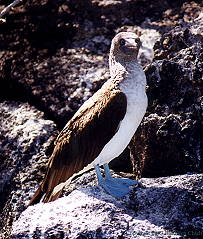
|
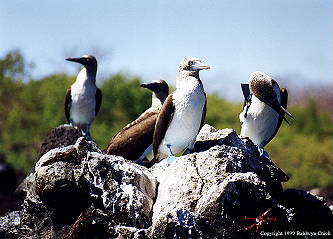
|
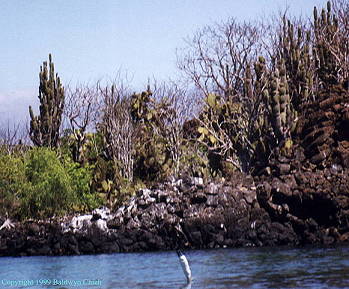
|
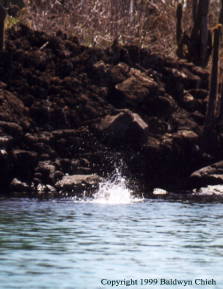
|
The mangroves grow in the water, their bright green canopies like islands that float above the water. We watch the water, looking for white-tipped reef sharks. Once again, the islands do not disappoint, and we find one in a sandy shallow area. Perhaps one of our favourite memories from the trip, however, is a school of golden cowrays gliding through the water with grace. Trish fell in love with these creatures when we first petted them in the Virginia Beach Aquarium, and she just about lept out of the boat to see them. They turned around, and made a second pass to make sure I got a good picture.
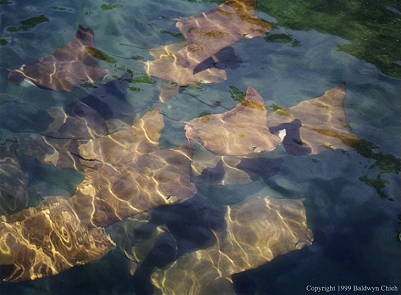
Our panga ride draws to a close, but not until a pair of brown pelicans land by the boat, and float by as if they're on their own tour with us as the wildlife.
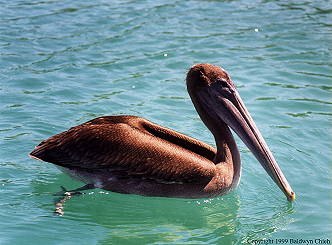 One of our curious visitors |
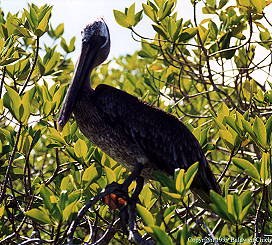 Young brown pelican in a mangrove |